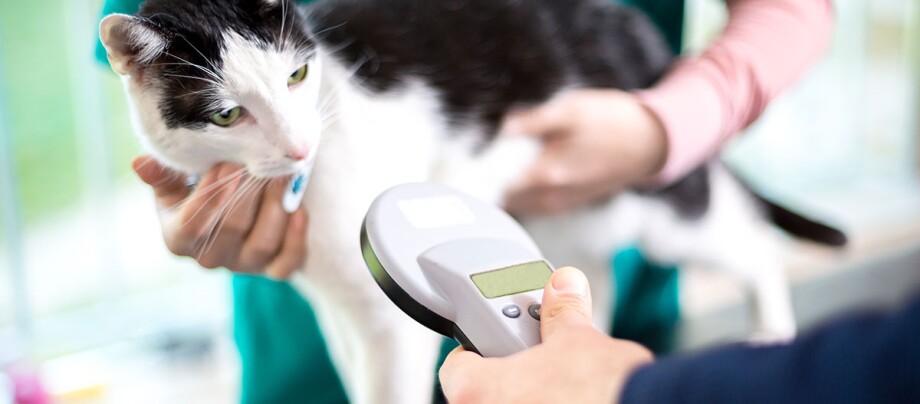Having Your Cat Chipped – for the Safety of Your Four-Legged Friend
11.03.2025 - Reading time: 3 minutes

Whether your cat is a house cat or an outdoor explorer, there is always a chance they might run away and be found on the streets. With a chip, cats can be quickly identified, and their owners can be contacted to bring their furry friends back home where they belong.
Equipping cats with a chip: how does it work?
Chipping a pet, usually a dog or cat, involves injecting a microchip (or transponder) under the skin. The chip is only about the size of a grain of rice. Typically, the vet uses a syringe to insert the chip on the left side of the animal’s neck. This process takes only a few seconds and generally doesn’t cause any pain. The microchip contains a 15-digit number:
- The three-digit country code
- The manufacturer’s number
- A unique code
The chip lasts for a lifetime and does not need to be replaced.
Is chipping a cat risky for the animal?
No, chipping a cat is generally safe and complication-free. In rare cases, there may be swelling or infection at the injection site. The transponder material is tissue-compatible, though occasionally, the chip may migrate to other areas of the body.
Where can I register the cat chip?
Inserting the chip does not automatically register it. As the pet owner, you must register the chip, often done at the vet’s office. The chip can be registered with fido.ie.
During registration, your contact information is saved so you can be reached in case of an emergency. Ensure to update your contact information if there are any changes. If the animal goes to a new owner, the data should also be updated.
Why should I have my cat chipped?
Thousands of cats disappear every year, especially outdoor cats that may get lost or involved in accidents. These cats often end up in animal shelters because their owners cannot be found. With a chip, the owner can be quickly identified and contacted.
Tip: There are also cat flaps with chip recognition. The cat flap only opens for the registered cat, preventing unwanted visitors.
Do cats have to be chipped?
No, it is not legally required to have your cat chipped unless you are traveling abroad in Europe. Since 2011, the EU pet passport is only valid with chip identification.
Where can I have my cat chipped, and how much does chipping cost?
You can have your cat chipped at the vet. Besides the service fee from the vet, there is also the cost of the chip, typically ranging between 40 and 70 euros.
Where can I have the cat chip read?
If you find a stray cat and want to notify the owner, you can have the chip read. A special reading device, available at vets and most animal shelters, is used to read the chip number. The pet registry then discloses the owner’s contact information, reuniting the cat with its owner.





